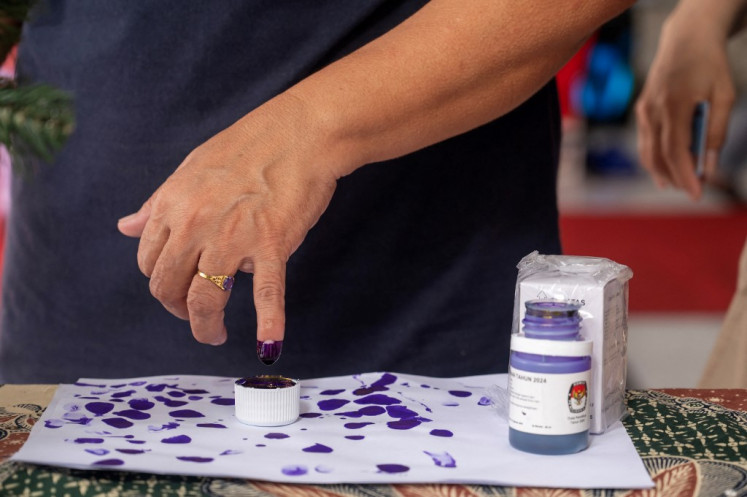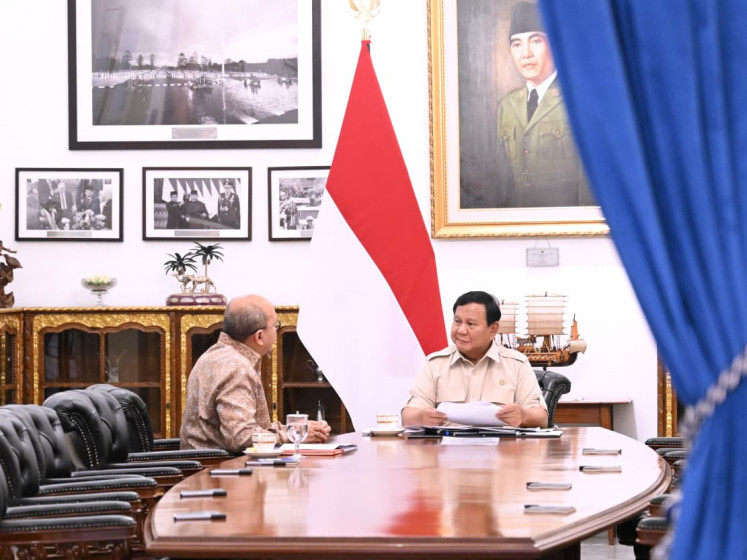Popular Reads
Top Results
Can't find what you're looking for?
View all search resultsPopular Reads
Top Results
Can't find what you're looking for?
View all search resultsMangrove conservation parks work for green alternative
In the northern part of the city, where much of the land is occupied by housing complexes or malls, there is a natural sanctuary in the form of a mangrove conservation park that links the sea to the north and the land to the south
Change text size
Gift Premium Articles
to Anyone
I
n the northern part of the city, where much of the land is occupied by housing complexes or malls, there is a natural sanctuary in the form of a mangrove conservation park that links the sea to the north and the land to the south.
The Angke Kapuk Nature Tourism Park, a mangrove conservation park run by a private company, is a tightly run operation in which 70 percent of the park has been replanted with mangrove plants and a neat infrastructure is maintained.
“Welcome to the conservation park. You cannot fish in here, sir,” said the park staff member at the gate who greeted The Jakarta Post on Saturday.
The pathway from the park gate to the management office was paved with bricks, symbolic of the conservative bent of the park, which covers 99.82 hectares.
An officer at the conservation park, Bambang A. Putra, said that visitors could pay Rp 10,000 (US$1.17) to enter the park, whereupon they would get mangrove plant seeds to plant using a special technique for marshy land.
“We call the technique bronjong,” he said, referring to method of planting that uses bamboo stems to strengthen the plants.
The park was officially opened to the public last year, but they started developing the area since 1998 when they got a license to manage the park from the Forestry Ministry, Bambang said.
He said that many species of animals inhabited the area, including rare birds such as Pecuk Ular (Anhinga melanogastera), Kowak Maling (Nycticorax nycticorak), Kuntul Putih (Egreta alba) and several others. Fish, crabs, snakes, lizards and monkeys can also be found there.
To get to the Angke Kapuk Nature Tourism Park, you can take the Transjakarta Busway (Harmoni-Kalideres) and to the Jelambar stop. Continue on the B01 Grogol-Angke public van to stop at Pantai Indah Kapuk gate. From there, you can walk or take an ojek or taxi to the park.
Just 3 kilometers from the Angke Kapuk Nature Tourism Park is Muara Angke Mangrove Conservation Park, located near the Mediterranean shopping complex, Pantai Indah Kapuk, North Jakarta.
The park, which was managed by the city administration, looked neglected. The information center was closed, with only broken, dusty wooden chairs and tables. Housing slums were spotted across a mangrove river inside the park.
“There are only four staff members who manage this place,” Arifin, a staff member, told the Post.
Arifin said there was no program available for visitors. Besides being a site for research and observation, the park was usually used by visitors who just wanted to stroll and take photos. (rpt)










